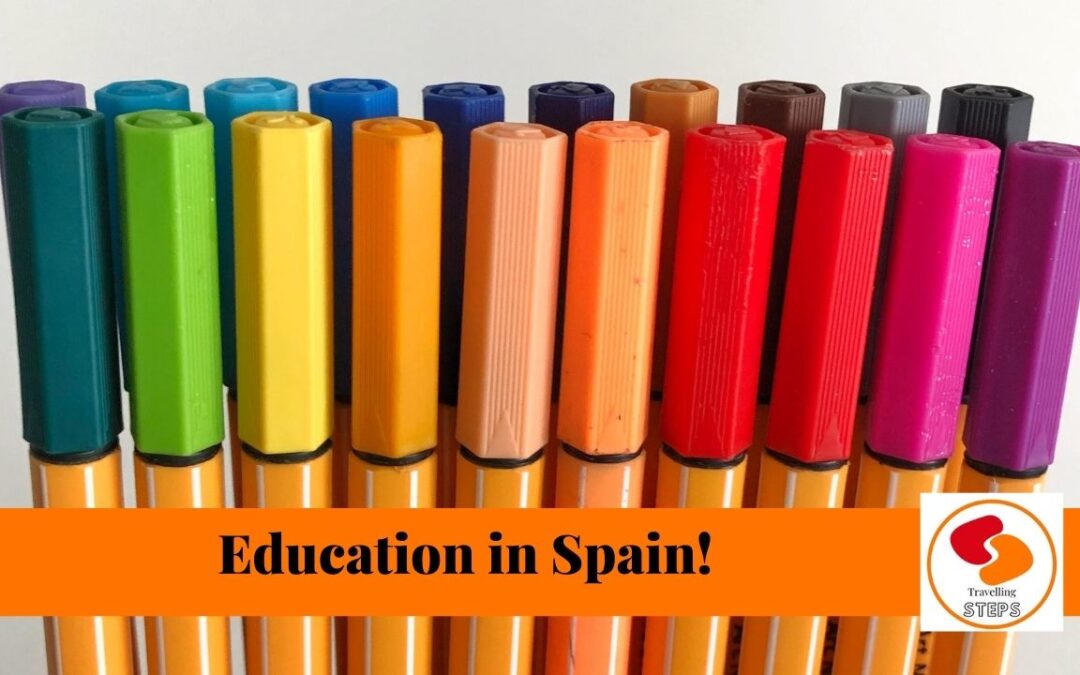Education in Spain has been a big thing for the last 40 years. By law, a kid has to attend school from the age of 6 until 16. By the time they have finished these mandatory 10 years, they are required to have attained a minimum level in Mathematics, World History and Spanish Literature/Grammar, together with a basic knowledge of Chemistry and Biology and an understanding of World Geography. You also have to be able to communicate in English.
Once they turn 16, kids can then choose between 3 different paths in life:
Education – option A (get a job)
Kids can start working. I know this might sound crazy to American readers, but in Spain you aren’t permitted to work before the age of 16. We aren’t allowed to deliver newspapers, bag groceries at the local supermarket or even help on the family farm. By law we cannot work at all.
However, everything changes when you turn 18. You can vote. You can be sent to jail. You can “finally” get your driving license (this is the typical 18 years old birthday gift from their parents and costs about 2000€). Most important of all, you no longer need your parents’ permission if you want to work.
According to Spanish law, parents have to provide financial support for their children until they can support themselves – no age limit is determined. To me, it comes as no surprise that the average age of emancipation in Spain is 29 years old. With three children – God help me!
EDUCATION – OPTION B (professional education)
In 1990 a new system of education was created called Formación Profesional or professional education. This was a programme of vocational studies to acquire the skills to become a plumber, hairdresser, mechanic electrician etc. Back then this wasn’t considered a positive option, in fact it was only considered suitable for the “drop outs”.
Thankfully the social perception of these programmes of study has changed a lot. You attend class for 3 or 4 years and courses now contain as much theory as practical skills. By the time you graduate, you will be very well trained, and companies will be fighting over you – 75% of graduates secure a job right after graduating from school.
Today there are over 60 different options to choose from. In addition to traditional programmes you can now study big data, marketing, graphic design, cooking, etc.… The curricula of these options are so close to some college degrees, that once you finish your 2nd year you are able to transition directly to college.
As you can imagine, this option has become super popular.
EDUCATION – OPTION C (go to College)
If you want to go to college, you have to study for 2 more years in school – this is what you would call junior or senior years in High School in the US. I studied my senior year in the USA, and the biggest difference to me is that here in Spain, those two extra years are the hardest ones of your school career.
You are offered 4 lines of studies (mathematics, science, arts, and human studies) The pathway that you choose will determine which college degree you are eligible to apply for. For example, if you want to become a doctor, you cannot choose the arts line, but must follow the science path. This is crazy to me. Virgen Santa! you are 16 years old when you have to make this decision – most kids have no idea what they want to do with the rest of their lives!
To top all of this, the week after you sit your final exams in senior year, we have a national test called Selectividad. It takes place at the same time all over Spain and kids can be questioned on anything from any subject across their high school years. The result from these tests will determine what college they can apply to – no pressure! By the way, if the kid has the flu or a temperature, they don´t care, the test won’t be done again until the following year. Trust me, you don’t want to be near a teenage kid during this week!
You might be wondering about the price of attending college in Spain. Some of our best universities are public. For example, if you want to become a doctor, a good public college will cost around 1000€ per year, books included. The problem is that there are only 100 kids admitted to each college each year, so you’ll need to have attained A+ across all subjects in high school (including gymnastics or singing) and will also need A+ in all components of the selectividad tests.
If you want to go to a private college, beside your good grades, you also have a personal interview (parents will be interviewed as well). The price per year for a good private university to study medicine will be 30000€ all included.
Here in Spain, there are barely any Scholarships. We can apply to some sponsored by the EU but most of the private ones will only cover 1000€ per year – the exception being a very prestigious scholarship that covers all college expenses which is sponsored by INDITEX (the company that owns Zara retail stores). Private scholarships will pay for the expenses of post-graduate studies.
According to de OCDE (Spanish cooperation and development organization) 60% of the population between the age of 25 and 65 have a college degree but just 30% have a professional education degree. This has become a major problem in Spain. We have too many lawyers, engineers and doctors, and barely any skilled workers. In fact, the highest unemployment rates are in the more highly educated workforce but where is a plumber when you need one?




